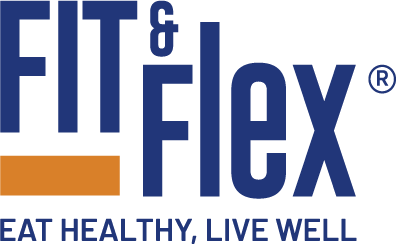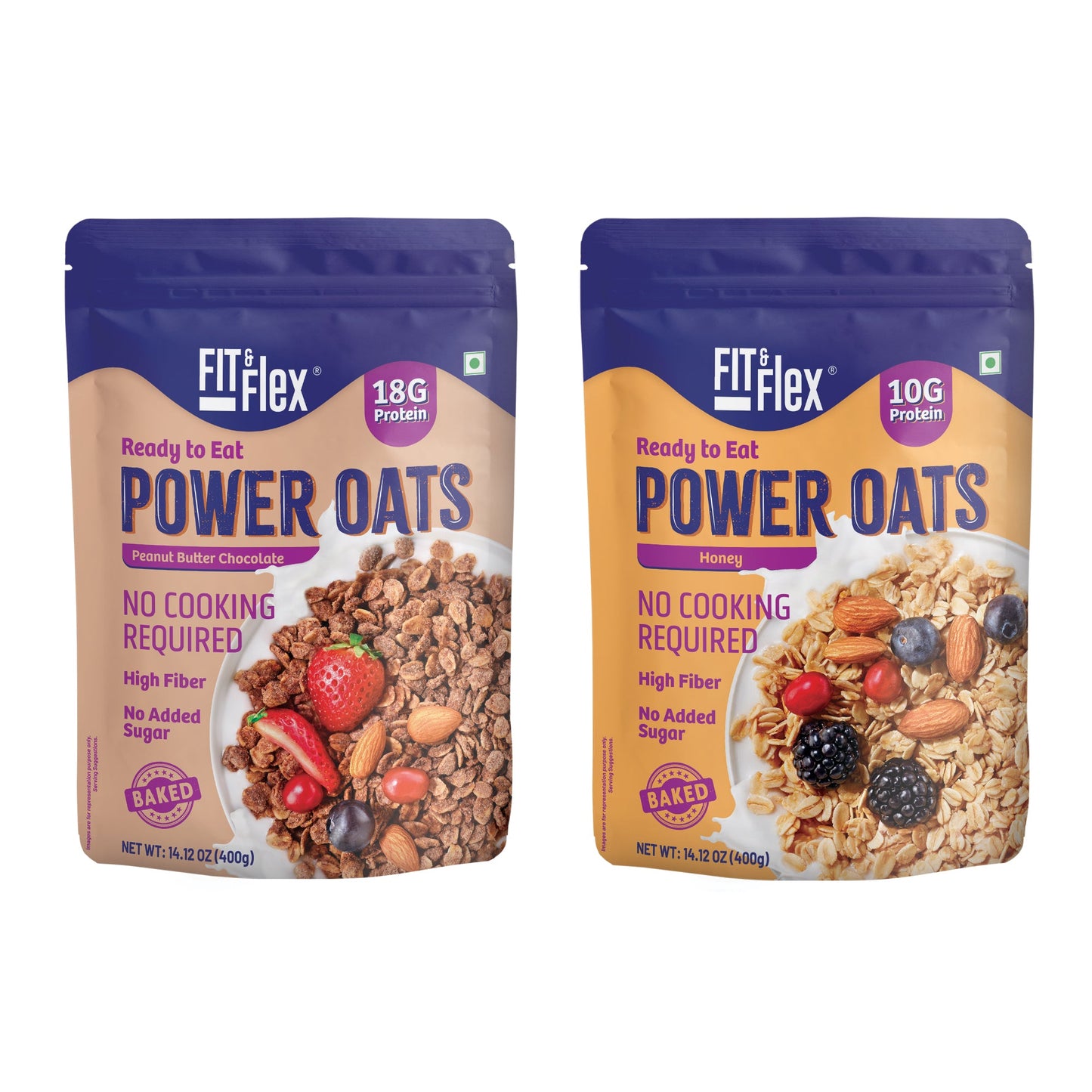Granola Vs Muesli: Difference Between Granola & Muesli

When you add cereals to your shopping list, do you add granola or muesli separately or pick up the available one? While you navigate through the cereal aisle for healthy breakfast options, you will find boxes of granola and muesli lined up against each other, but more often than not, you tend to mistake one for the other. But what separates one from the other? Is there a difference? Yes, there is!
While both of them get made of oats, nuts, fruits, and seeds, typically muesli remains unbaked while granola gets baked with added sweeteners and oil to bind the ingredients together, and therein lies the difference.
1. What Is Muesli?
Muesli is an uncooked cereal made of rice, nuts, seeds, and fruits. It is one of the healthy breakfast options made up of several ingredients such as almonds, peas, dried fruit, and so on, with a base of oats and whole grains. It is a popular breakfast food all over the world. You can enjoy muesli either, hot or cold. Unlike granola, the ingredients in muesli are not baked, implying that they are raw and loose. Traditionally, it is soaked overnight in milk or juice and served cold.
2. What Is Granola?
Granola is a baked cereal that typically combines grains, sweeteners, and oil to bring all of the ingredients together. It is edible straight from the bag. Granola is a common and popular breakfast food made from rolled oats, crushed almonds, honey, frozen dried real fruits, and prebiotic fiber. It is available in a variety of forms, ranging from gluten-free and low-sugar to superfood-enriched. Granola, on the other hand, contains all of the same ingredients as muesli but is baked.
Muesli Vs Granola: Nutritional Comparison
Because both types of cereal are made up primarily of the same ingredients, their nutritional values are comparable. Although muesli does not usually have added sweeteners, it does have a high sugar content if it contains dried fruit, similar to granola. It’s also worth noting that added sweeteners, even if derived from natural fruit, significantly increase carb and calorie contents. As a result, you should consume both muesli and granola as per your requirements and what works best for your body and health.
Furthermore, keep in mind that typical serving sizes vary from product to product, which may result in an increase – or decrease – in your overall calorie and nutrient intake. Furthermore, while the muesli and granola listed above have a similar amount of fat, you may find that the fat content of some commercial brands varies greatly.
Such is the case because the differences in nutritional value get determined by the addition of seeds, nuts, and dried fruits. As a result, remember to read the nutrition facts label before selecting the one that best meets your needs.
| Muesli | Granola | |
| Calories | 151 | 212 |
| Carbs | 32 grams | 44 grams |
| Sugar | 11 grams | 15.5 grams |
| Fiber | 4 grams | 4 grams |
| Protein | 3.6 grams | 5 grams |
| Fat | 2.3 grams |
2.8 grams |
Above you will find the comparison between half a cup (43 grams) of muesli and half a cup (56 grams) of granola.
Muesli Vs Granola: The History
The history of how muesli and granola came into being becomes an amusing read. It goes back to the time when people were researching healthier breakfast options.
Muesli is a Swiss-German combination of the German word “müs,” which means porridge, and the diminutive suffix “-li.” Maximilian Bircher-Benner, a Swiss physician and nutritional pioneer, is credited with the “invention” of muesli. The ingredients included oat flakes, raw apples, condensed milk, nuts, and lemon juice. It led to dramatic improvements in the health of many of Dr. Bircher-Benner’s patients. Dr. Bircher-Benner determined that increased exercise and a more nutritious diet could alleviate much of his patients’ illnesses.
John Harvey Kellogg’s granola was the first ready-to-eat breakfast cereal. However, it had based on James Caleb Jackson’s earlier invention, granula, which he invented in 1863. So, while Kellogg’s granola was not the first cereal made or even the first cold cereal, it was most likely the first cereal that we would consider modern. You had to soak Caleb’s granula in water before eating it. That’s how granola came into existence.
Muesli Vs Granola: Who Eats It?
Granola is very familiar to most Americans and now most of the urbanized population across the globe, as there are thousands of varieties on the shelves of every supermarket. While granola first appeared in the mid-1800s as “granula,” a health food made from graham flour, muesli was first introduced in the 1900s. Granula was resurrected later that year, with the name changed to “granola.” On the other hand, muesli became acclaimed as a healthy, easy-to-consume breakfast option for many in the 1900s and has gained popularity over the years.
You will find both granola and muesli shelved in many households as they have now become a staple breakfast food for many city people because it is quick and easy to eat and make.
Muesli Vs Granola: How To Eat It?
You can eat both granola and muesli for breakfast, but you can also eat them as a snack or dessert. You can eat muesli after soaking it in milk or yogurt and which fills each oat and creates a creamier dish, similar to overnight oats. It can also be eaten raw with yogurt, on toast or sweet potatoes, or in milk.
You will find most people consume granola in the form of a yogurt parfait with yogurt and fruit. But you can devour it in a variety of other ways (think in a bar or as a crunchy topping on oatmeal). A favorite granola combination for many happens to be thick Greek yogurt, honey, and peanut butter.
Muesli Vs Granola: Which Is The Healthier Option?
Muesli and granola are both oat-based cereals that contain beneficial beta-glucans. The primary type of fiber in oats is beta-glucans. They are soluble, meaning that when mixed with water, they form a gel, and they have been shown to improve gut health, promote weight loss, and lower blood sugar, cholesterol, and blood pressure levels.
Nuts and seeds, found in granola and muesli, contain monounsaturated and polyunsaturated fatty acids. They help reduce risk factors for heart disease as they are heart-healthy. However, both muesli and granola may have some drawbacks.
Muesli can also contain added sugars and dried fruits, which reduce the nutrients in the cereal and increase the calories. Furthermore, many granolas on the market are low in added sugars and high in healthy oils. All you have to do is read the labels on all store-bought items before you can call them healthy.
Muesli Vs Granola: Which One Should You Choose?
Both muesli and granola have advantages and disadvantages. Whether you’re watching your calories or switching up your lifestyle to a healthy one, granola and muesli both work well for you. Most people recommend that when you purchase either, you should check the ingredients and nutritional value. Check the ingredient list of the muesli you’re considering to see if it’s been sweetened and try to stick to one that hasn’t.
When it comes to granola, choose one after checking its nutritional content and make sure you pick a healthy one. Alternatively, you can always choose to make homemade granola bars, but nowadays, you can find plenty of healthier options in the store. You can pick up Fit & Flex Granola, which is crunchy, tasty, and healthy. It is entirely baked, easy to munch on, high on flavor, and packs a nutritious punch to your breakfast. Since you will find it baked, you can eat it right away for breakfast or even as an evening snack. That’s what makes granola a winner in terms of convenience, taste, and nutritional value.
Muesli Vs Granola: Is It For Weight Loss?
Muesli and granola work wonders in terms of the nutritional value they offer. But if you purchase granola, it can provide you with plenty of health benefits, including weight loss. However, you can never overdo it. Both muesli and granola, as mentioned earlier, have pros and cons. Both can make you feel fuller for a longer time. However, if you want to watch your calories, eat muesli and granola just once for breakfast and skip it in snacks. Moreover, if you buy any of these products without checking their nutritional values and the ingredient list, you may end up purchasing ones with added sugar, which will not aid in weight loss.
Therefore, if you’re buying store-bought muesli or granola, make sure you check that it is healthy. When you think of healthy breakfast options, both muesli and granola can help you in your weight loss journey, combined with regular exercise and physical activity. Choose one that suits your body requirements and make adjustments accordingly to your everyday diet.
FAQ's
Q1. What's the difference?
- Muesli: Unbaked mix of oats, nuts, seeds, and fruits. Eaten raw or soaked in milk/juice.
- Granola: Baked mix of oats, nuts, seeds, fruits, sweeteners, and oil. Eaten dry or with yogurt/milk.
Q2. Which is healthier?
- Depends! Muesli generally has less sugar (unless loaded with dried fruit) but both can be healthy. Read labels!
Q3. How to eat them?
- Muesli: Enjoy cold with milk/yogurt or hot after soaking.
- Granola: Enjoy as a cereal with milk/yogurt or as a topping for parfaits or oatmeal.
Q4. Which is better for weight loss?
- Both can be part of a weight loss plan! Choose options lower in sugar and portion control is key.
Q5. Anything else to consider?
- Make your own muesli or granola for more control over ingredients.
- Choose pre-made options that fit your dietary needs (low sugar, high protein, etc.).
The Bottom Line
Granola and muesli are very similar in many ways, including the majority of their ingredients and health benefits. The main distinction is how they get made. Granola gets baked and typically contains added sweeteners such as honey or syrup, as well as dried fruits. Muesli, on the other hand, is consumed raw and only contains dried fruits. You will find them both considered healthy breakfast options in many households today.
Both granola and muesli have their health benefits and can keep you feeling fuller for a longer time. And, you can consume them at your will – breakfast or snack – to reap their benefits. Finally, reading the labels and ingredient lists is critical to selecting the best option for you.
Fit & Flex Granola comes in several flavors, offering you the perfect breakfast option, as it is healthy, prebiotic, and contains the right crunch you need to kick-start your day. Its 360o baking technique makes for the crunchiest cereal option for breakfast or snacks. Made of the finest ingredients and entirely baked, you can snack on them any time of the day or night. Begin your journey towards a healthier lifestyle with Fit & Flex Granola today!




